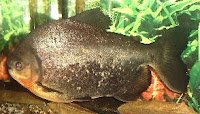

Photo 9.4 : The photos and posters above is enough to tell the Snake Head character

Photo 9.5: The diagram on what is called Labyrinth Organ
They are considered valuable food fish. Larger species like Channa Striata, Channa Maculata or Parachanna Obscura are farmed in aquaculture. Snake Heads feed on plankton, aquatic insects, and mollusks when small. When adult, they mostly feed on other fish like carp, or frogs. In rare cases, small mammals such as rats are taken. The size of the snakehead species differs greatly. Dwarf Snake Heads like Channa Gachua grow to 25 cm. Most Snake Heads grow up to 100 cm. Only 2 species Channa Marulius and Channa Micropeltes can reach a length of more than 1 meter and a weight of more than 6 kg.
The snakehead is imported to the U.S. as a food fish and also for the aquarium trade where many thousands are sold every year as pets. The Snake Head fish is unique in several ways from most other fish. Similar in body-type to a muscular eel, some varieties can grow to 1.2 meter in length. The Snake Head has a flat snake-like head and toothed maw, hence it's name. What makes the Snake Head so unique, however, is its voracious appetite and its ability to breathe air. In fact the snakehead can travel short distances across land and live for up to three days out of water! It will eat fish equal in size to itself and will consume small mammals as well. There are even reports in Asia of snakeheads attacking and killing humans (“This one have been verbally recorded, happens in Pahang, Malaysia”- Elham).

Photo 9.6 : Giant Snake Head caught when fishing
Many people do realize the environmental impact of releasing a pet or a food fish into local waters where that fish is not native. With no natural enemies in U.S. waters, the Snake Head's prolific breeding habits and hardy natures create a real potential for Snake Heads to multiply and destroy entire populations of fish and amphibians in the waters in which they are released, including many species on the endangered list. This could cause significant damage not only to the environment but also to fishing and other recreational industries that rely on the preservation of lakes and rivers.
Snake Heads are known in the aquarium trade as tankbusters; they grow to be very large and require a substantial investment to keep, not only because of the tank size required but also because they must be fed large amounts of food daily. For this reason Snake Heads are often released at some point by their owners. Hobbyists should return these fish to the aquarium trade where they can be placed with other willing aquarists, local fish stores, or public aquariums. It is illegal to release non-native fish into local waters, whether a Snake Head or any other type of fish.
The threat of Snake Heads finding their way into U.S. waterways is not likely to go away anytime soon. Only strict monitoring, swift action and stiff fines can prevent what might otherwise be a potentially devastating loss to the local environment with significant economic impact.(“Next time, don’t throw your Snake Head away, you wouldn’t know how good their flesh tastes. Me? I have ate lots n lots of ‘em”- Elham).










.jpg)
.jpg)
.jpg)








